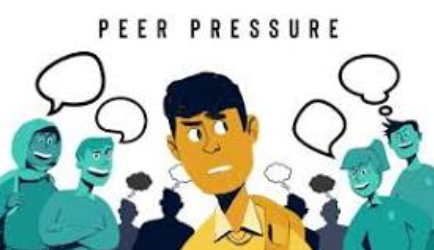The origin of peer pressure dates back to when fitting into the herd was necessary to survive, but now, peer pressure can be described as the comfort of fitting in. Over the past several decades, the act and definition of peer pressure have not changed much. However, the way it is communicated has.
People require a positive self-image and acceptance from the ingroup. As social media has become more prevalent in our society, people are more connected than ever before and have begun to base their self-worth on how they are perceived and portrayed online. Peer pressure now typically overlaps the topic of cyberbullying with constant text messages, tagging people in posts, and the classic method of constantly calling and texting to demand our attention. The constant attention required by the media has trained us to feed our thoughts with worst-case scenarios and infer things that may not be true. With the lack of expression and clarification provided by technology, our brains are allowed to fill in the blanks.
Another aspect of peer pressure is social comparison. Especially with the rise of technology and social media, we are constantly exposed to carefully designed highlight reels featuring people’s ‘perfect lives’. This can lead us to believe that we are inadequate or unworthy of what we have earned or deserved. It can also lead to a constant fear of missing out (FOMO) which influences and pressures us to partake in activities that we may not want to in fear of being left out.
It is important to recognize that peer pressure can be detrimental to one’s mental and possibly physical health. We should not allow a tactically curated social reality to dictate how we live our lives. While to awful feelings peer pressure may spark are very real, what you see isn’t always the same. Don’t allow yourself to live your life in fear of being imperfect, imperfection is a form of freedom.















